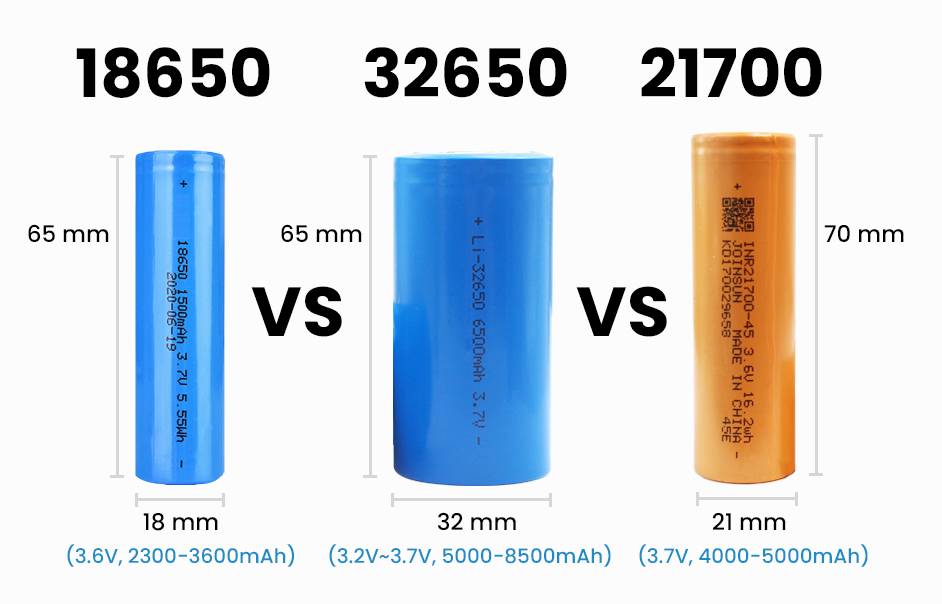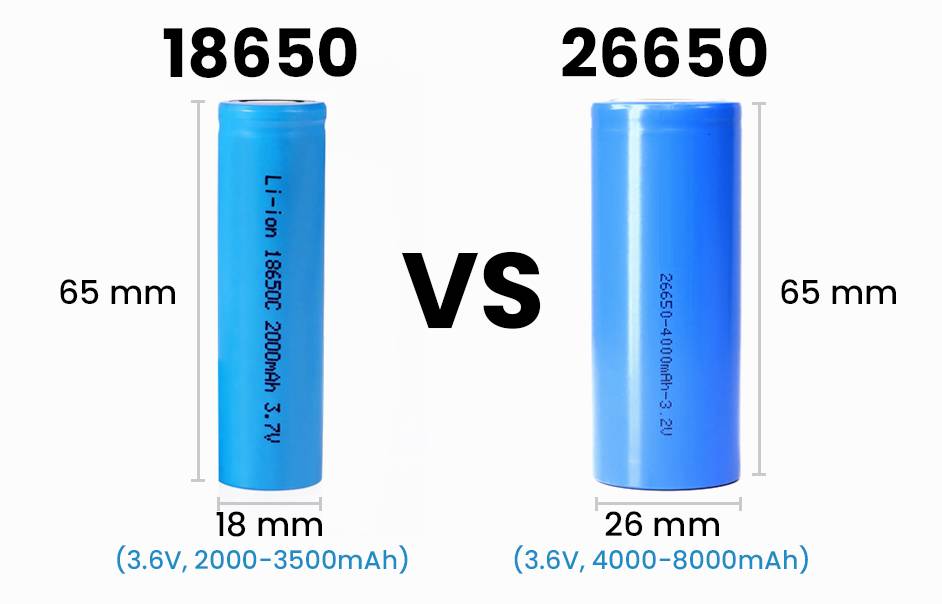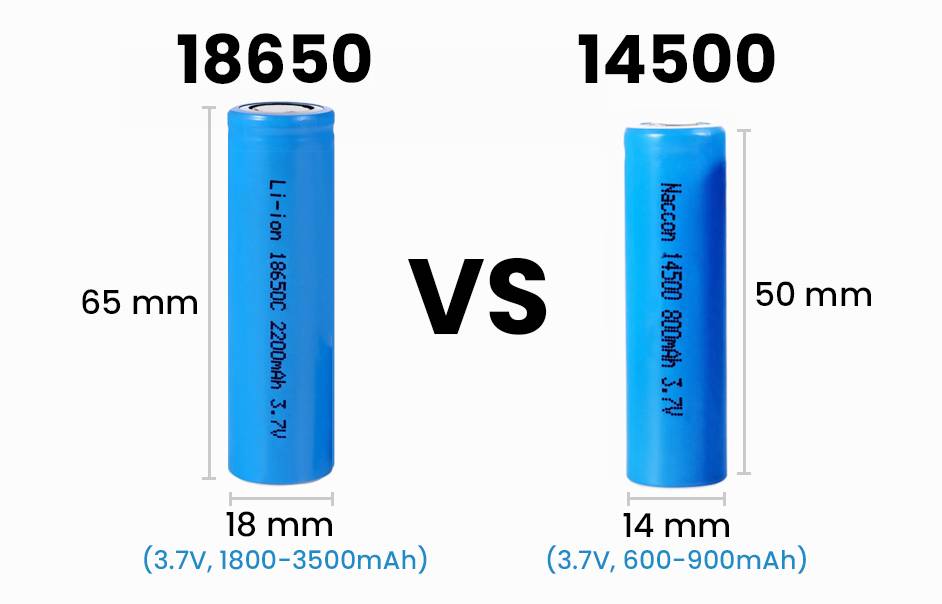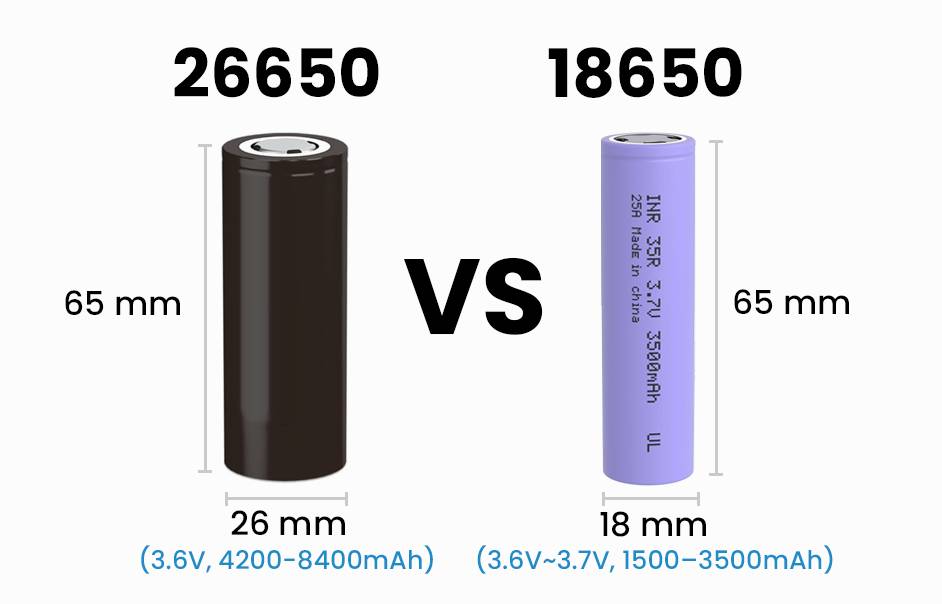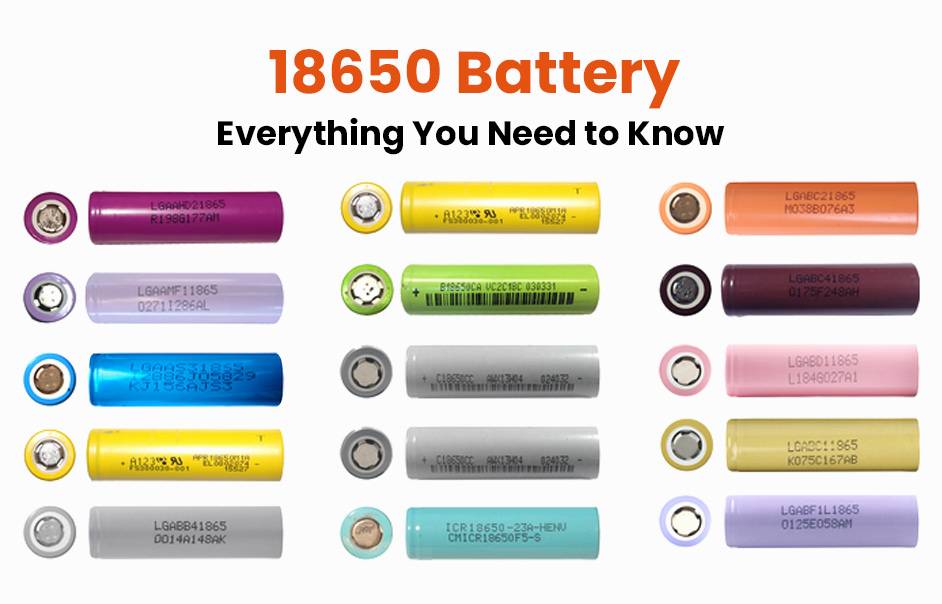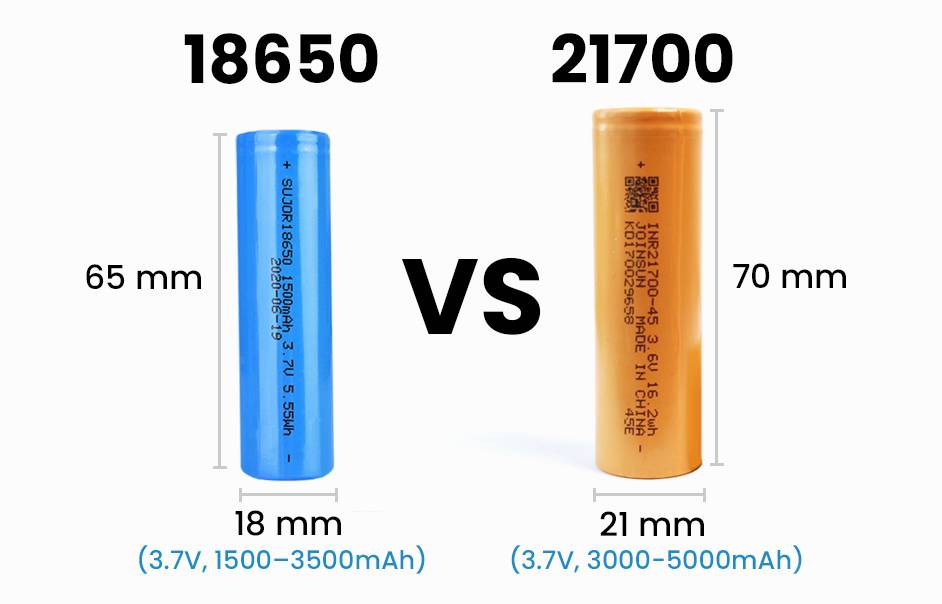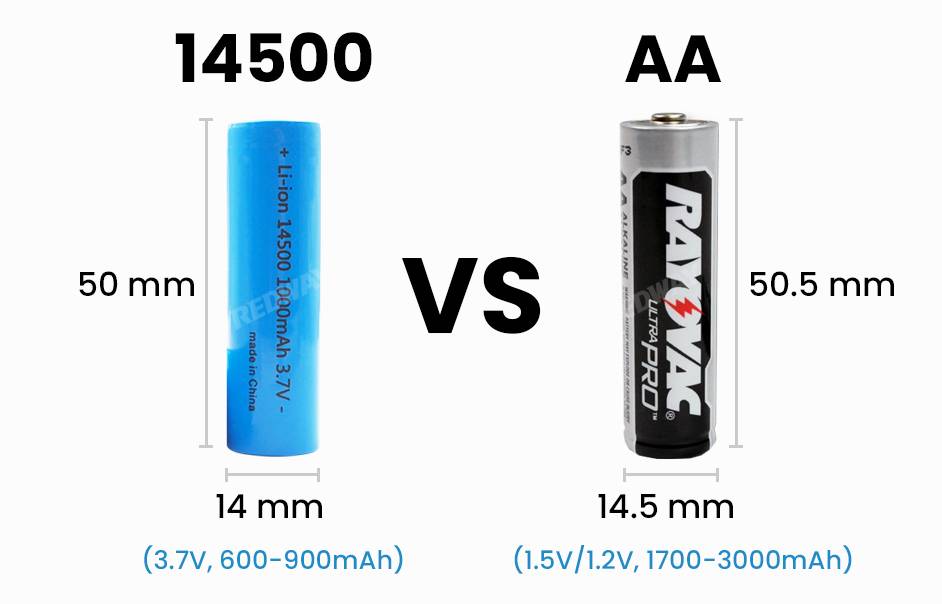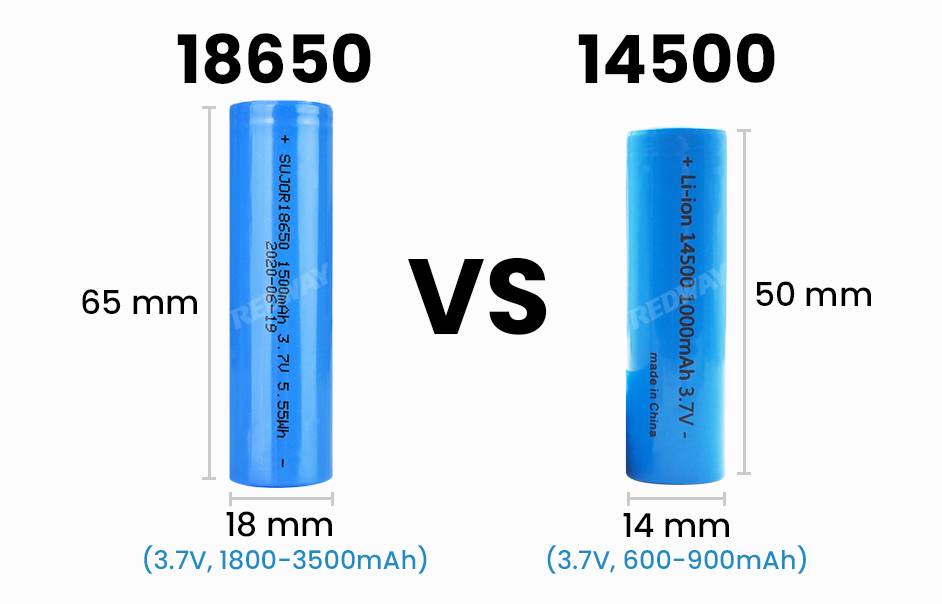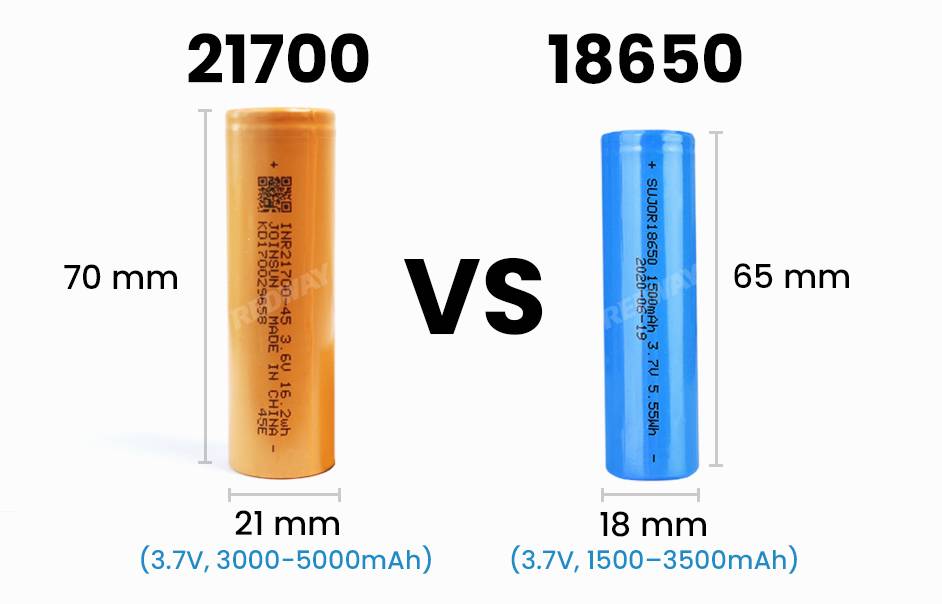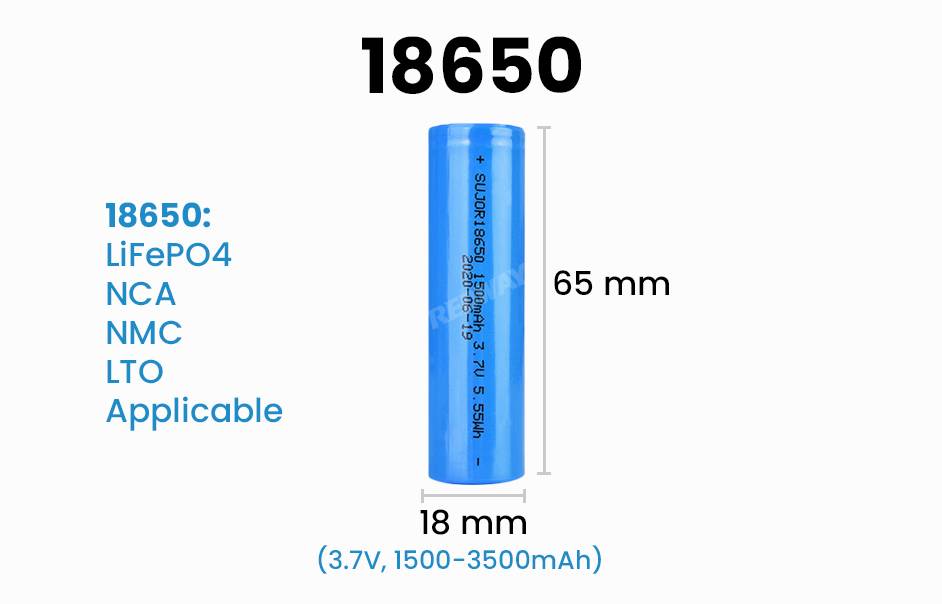- Rack-mounted Lithium Battery
- Golf Cart Lithium Battery
-
Golf Cart Lithium Battery
- 36V 50Ah (for Golf Carts)
- 36V 80Ah (for Golf Carts)
- 36V 100Ah (for Golf Carts)
- 48V 50Ah (for Golf Carts)
- 48V 100Ah (Discharge 100A for Golf Carts)
- 48V 100Ah (Discharge 150A for Golf Carts)
- 48V 100Ah (Discharge 200A for Golf Carts)
- 48V 120Ah (for Golf Carts)
- 48V 150Ah (for Golf Carts)
- 48V 160Ah (Discharge 100A for Golf Carts)
- 48V 160Ah (Discharge 160A for Golf Carts)
-
Golf Cart Lithium Battery
- Forklift Lithium Battery
- 12V Lithium Battery
- 24V Lithium Battery
- 36V Lithium Battery
- 48V Lithium Battery
-
48V LiFePO4 Battery
- 48V 50Ah
- 48V 50Ah (for Golf Carts)
- 48V 60Ah (8D)
- 48V 100Ah (8D)
- 48V 100Ah
- 48V 100Ah (Discharge 100A for Golf Carts)
- 48V 100Ah (Discharge 150A for Golf Carts)
- 48V 100Ah (Discharge 200A for Golf Carts)
- 48V 150Ah (for Golf Carts)
- 48V 160Ah (Discharge 100A for Golf Carts)
- 48V 160Ah (Discharge 160A for Golf Carts)
-
48V LiFePO4 Battery
- 60V Lithium Battery
-
60V LiFePO4 Battery
- 60V 20Ah
- 60V 30Ah
- 60V 50Ah
- 60V 50Ah (Small Size / Side Terminal)
- 60V 100Ah (for Electric Motocycle, Electric Scooter, LSV, AGV)
- 60V 100Ah (for Forklift, AGV, Electric Scooter, Sweeper)
- 60V 150Ah (E-Motocycle / E-Scooter / E-Tricycle / Tour LSV)
- 60V 200Ah (for Forklift, AGV, Electric Scooter, Sweeper)
-
60V LiFePO4 Battery
- 72V~96V Lithium Battery
- E-Bike Battery
- All-in-One Home-ESS
- Wall-mount Battery ESS
-
Home-ESS Lithium Battery PowerWall
- 24V 100Ah 2.4kWh PW24100-S PowerWall
- 48V 50Ah 2.4kWh PW4850-S PowerWall
- 48V 50Ah 2.56kWh PW5150-S PowerWall
- 48V 100Ah 5.12kWh PW51100-F PowerWall (IP65)
- 48V 100Ah 5.12kWh PW51100-S PowerWall
- 48V 100Ah 5.12kWh PW51100-H PowerWall
- 48V 200Ah 10kWh PW51200-H PowerWall
- 48V 300Ah 15kWh PW51300-H PowerWall
PowerWall 51.2V 100Ah LiFePO4 Lithium Battery
Highly popular in Asia and Eastern Europe.
CE Certification | Home-ESS -
Home-ESS Lithium Battery PowerWall
- Portable Power Stations
18650 vs 14500 Batteries, Comprehensive Guide
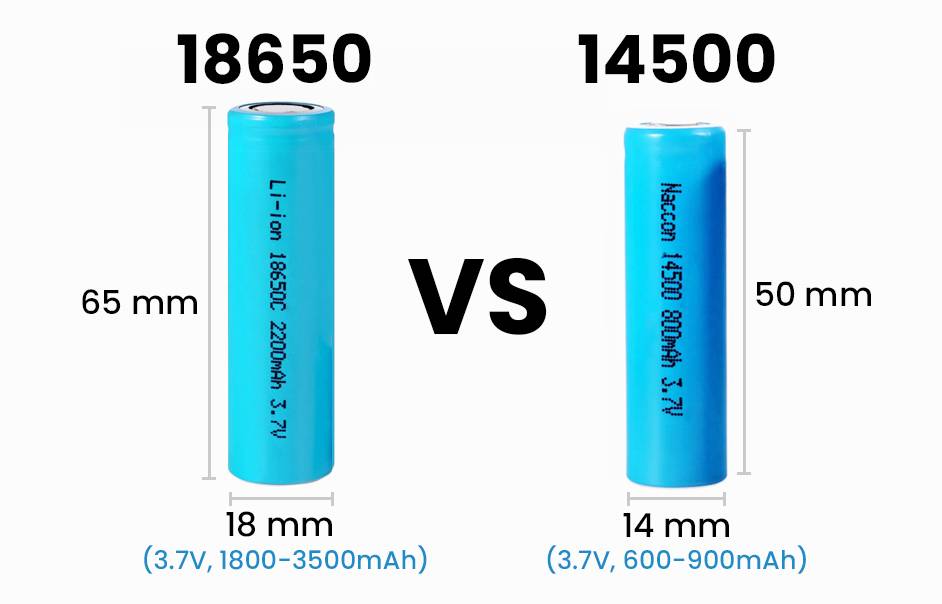
Powering our daily devices requires the right batteries. In this comprehensive guide, we explore the popular 18650 and 14500 batteries, helping you make informed choices. We delve into their similarities, differences, performance, uses, safety, and costs, providing personalized recommendations based on your needs. Buckle up for an enlightening journey into battery knowledge and empower your device choices!
What are 18650 and 14500 batteries?
Discover the essentials of two commonly encountered batteries, the 18650 and 14500, to make informed choices:
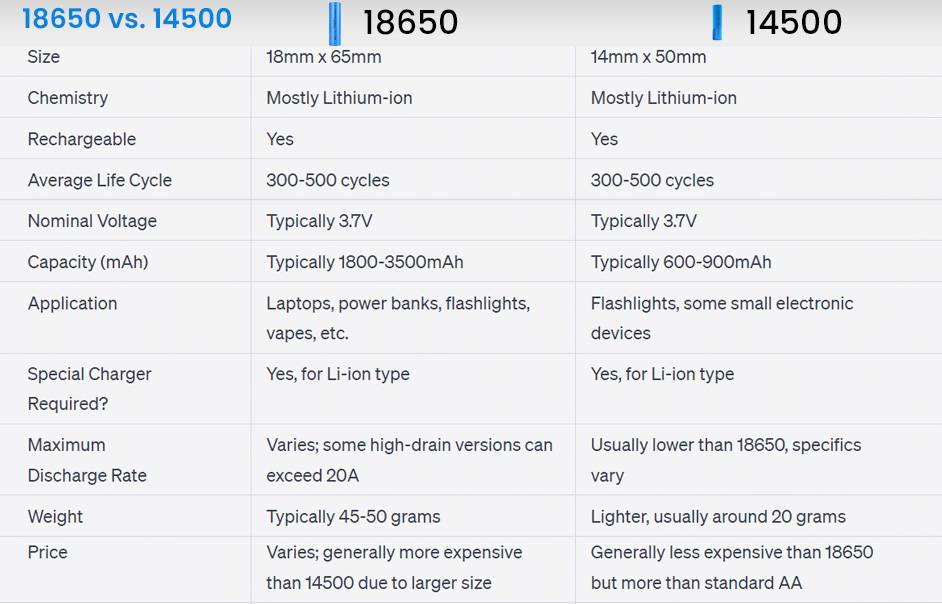
- Defining Dimensions:
- 18650: A lithium-ion rechargeable battery measuring 18mm in diameter and 65mm in length.
- 14500: Also a lithium-ion rechargeable battery, but smaller at around 14mm in diameter and 50mm in length.
- Capacity Matters:
- The 18650’s larger size translates to higher capacity, offering more energy and extended usage before requiring a recharge.
- The 14500, being smaller, has a lower capacity but finds its niche in compact devices with limited space.
- Performance Distinctions:
- 18650: With its larger size, it boasts higher discharge rates, suitable for high-drain devices like flashlights or power tools.
- 14500: Ideal for low-drain devices such as electronic toys or small gadgets due to its smaller size.
- Common Applications:
- 18650: Favored for laptops and electric vehicles, thanks to versatility and high capacity.
- 14500: Thrives in portable electronics like flashlights or cameras, catering to limited space needs.
- Safety First:
- Both batteries require cautious handling to prevent overheating or explosions. Adhering to charging protocols and avoiding extreme conditions is crucial.
- Cost Considerations:
- Cost varies, with the 18650 generally having a higher price tag due to its larger capacity and versatility.
In conclusion, understanding the distinctions between 18650 and 14500 batteries enables users to select the right power source for their specific needs, balancing size, capacity, and performance.
Comparison in Size and Capacity
Delve into the distinctions in size and capacity between the 18650 and 14500 batteries to make an informed choice:
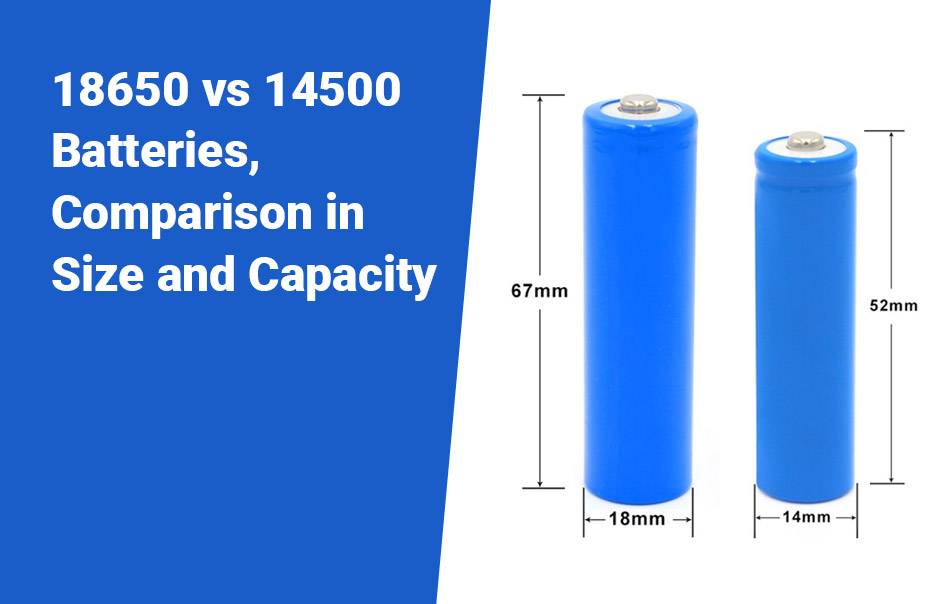
- Size Matters:
- 18650: Larger in both diameter and length, making it a more substantial option.
- 14500: Compact and smaller in size, catering to those seeking a more space-efficient choice.
- Capacity Comparison:
- The 18650 claims the upper hand in energy storage, boasting a larger capacity than the 14500. This results in extended usage times before requiring a recharge.
- Performance Considerations:
- While the 18650 excels in overall capacity, the 14500 proves advantageous in scenarios where space or weight considerations are paramount. The choice depends on specific application requirements.
- Balancing Act:
- It’s crucial to recognize that the larger capacity of the 18650 doesn’t guarantee superior performance in every situation. Factors such as discharge rate and application needs play a role.
- Tailoring to Applications:
- Depending on the application – be it powering flashlights or other electronic devices – understanding the trade-offs between size and capacity aids in selecting the battery that aligns with specific usage requirements.
In conclusion, the choice between the 18650 and 14500 batteries boils down to a nuanced consideration of size, capacity, and application needs, ensuring users find the optimal power solution for their unique scenarios.
Performance Differences
Explore the performance disparities between 18650 and 14500 batteries to make an informed choice:
- Capacity Dynamics:
- 18650: Larger size contributes to higher capacity, providing extended run times and increased power output.
- 14500: Compact dimensions result in a comparatively lower capacity.
- Voltage Sturdiness:
- Both batteries share similar nominal voltages, with the 18650 showcasing better voltage retention under high loads. This ensures consistent power delivery over prolonged durations.
- Discharge Rate Distinctions:
- The 18650 boasts a higher maximum continuous discharge rate, making it suitable for devices demanding elevated power outputs or quick energy bursts.
- Self-Discharge Nuances:
- The 18650 exhibits a lower self-discharge rate, retaining its charge for more extended periods during periods of inactivity.
- Contextual Significance:
- While these performance variances exist, their significance depends on the intended usage and specific requirements of the device in question.
In summary, understanding the nuances in capacity, voltage stability, discharge rates, and self-discharge rates empowers users to choose the battery type that aligns seamlessly with their device’s performance demands.
Common Uses for Each Battery Type
Explore the diverse applications tailored to the unique characteristics of 18650 and 14500 batteries:
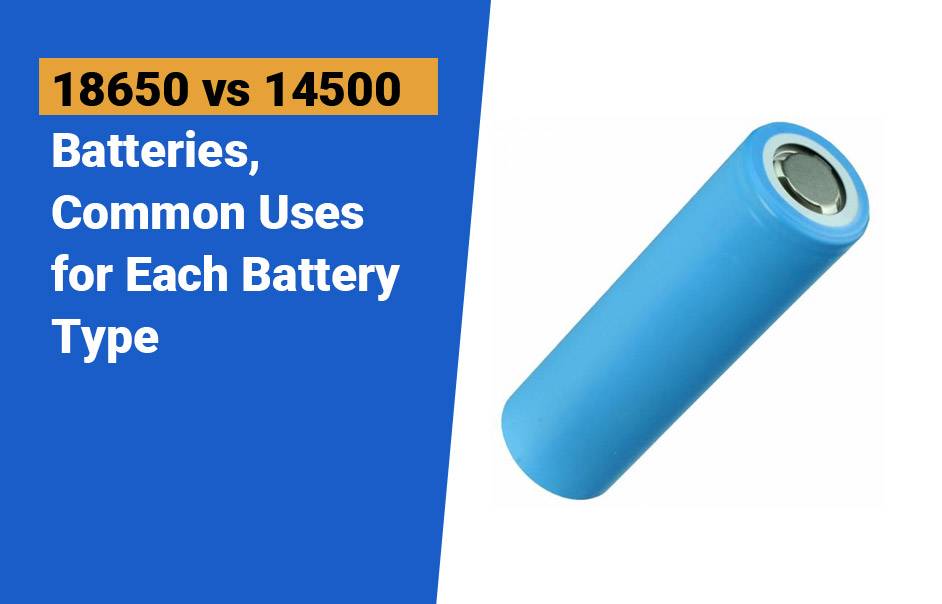
18650 Batteries:
- Extended Powerhouses: Widely embraced in devices requiring prolonged run times and substantial power, such as laptops and electric vehicles.
- Illuminating Brilliance: Found in flashlights, providing a consistent and reliable energy source for extended periods.
- Eco-Friendly Mobility: Powering electric vehicles, contributing to sustainable transportation solutions.
- Portable Energy Banks: Utilized in power banks, offering a reliable and high-capacity portable charging solution.
14500 Batteries:
- Compact Performers: Suited for smaller electronic devices like remote controls, toys, and digital cameras, balancing size and power output.
- Gadget Allies: Powering small portable gadgets, providing convenience without compromising on performance.
- Flashlight Enthusiasts’ Choice: Preferred by flashlight enthusiasts for lightweight options during outdoor activities like camping or hiking.
- Medical Precision: Found in medical equipment such as blood glucose meters and hearing aids, where reliability and longevity are crucial.
Contextual Significance:
- The sleek design of 14500 batteries makes them popular in flashlight enthusiasts’ circles, while 18650 batteries cater to the vaping community with their long-lasting capabilities.
- Understanding your device’s requirements ensures optimal performance, whether you prioritize extended run times or portability.
In conclusion,
the applications of 18650 and 14500 batteries span across various industries, offering tailored solutions for specific device needs. Matching the right battery type to your requirements ensures optimal performance in diverse gadgets and equipment.
Safety Considerations
Dive into the essential safety aspects when handling 18650 and 14500 batteries to ensure a secure and efficient user experience:
1. Voltage and Current Alignment:
- Risk Awareness: Be mindful of potential overheating or short-circuiting risks, ensuring the device’s power requirements match the battery specifications.
- Harmony Matters: Match battery voltage and current with device requirements to mitigate risks associated with incompatible power draws.
2. Overcharging and Over-Discharging Protections:
- Gas Buildup Awareness: Guard against overcharging, preventing gas buildup that could lead to leakage or, in extreme cases, explosion.
- Performance Preserving: Avoid over-discharging to maintain battery capacity and overall performance, prolonging the battery’s lifespan.
3. Storage and Transportation Best Practices:
- Climate Control: Store batteries in a cool, dry place away from direct sunlight to prevent degradation and potential hazards.
- Safe Journeys: During transportation, shield batteries from physical damage by utilizing proper cases or holders, ensuring a secure travel experience.
4. Avoid Mixing Different Batteries:
- Voltage Harmony: Never mix different types or brands of batteries to prevent imbalances in voltage levels, averting potential dangers like leakage, overheating, or explosions.
- Consistency is Key: Maintain uniformity in battery types to ensure safe and optimal performance.
Conclusion:
- Safe and Efficient Use: By understanding and adhering to these safety considerations, users can confidently harness the power of 18650 and 14500 batteries for their specific needs without compromising safety or performance.
Cost Analysis
Navigate the cost landscape wisely when choosing between 18650 and 14500 batteries by delving into a comprehensive cost analysis:
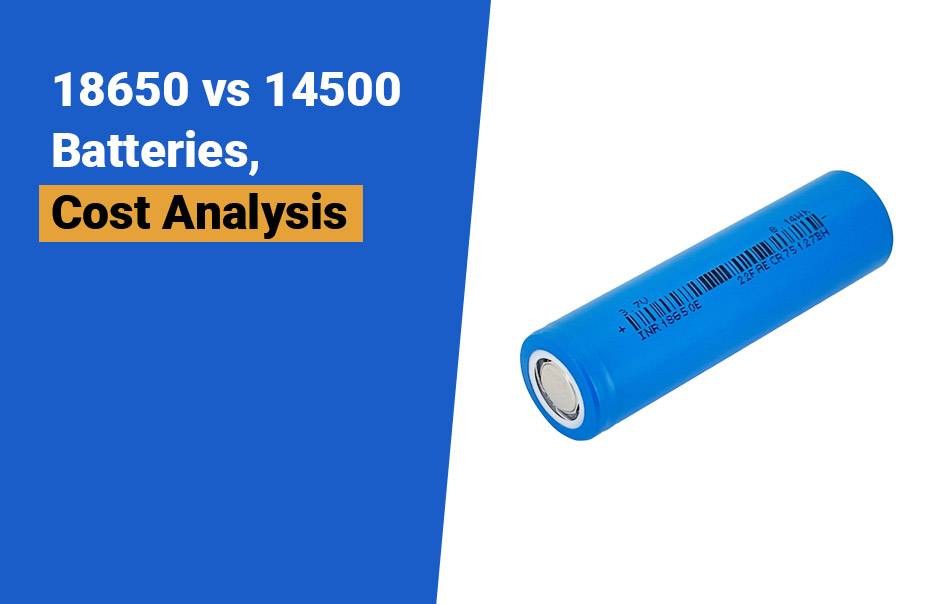
1. Pricing Variables:
- Brand, Capacity, and Quantity: Recognize that battery prices fluctuate based on factors like brand, capacity, and the quantity purchased.
- Size Matters: Generally, 18650 batteries come at a slightly higher cost than 14500 batteries due to their larger size and enhanced capacity.
2. Beyond the Initial Cost:
- Performance and Lifespan: Consider that although 18650 batteries may have a higher upfront cost, their superior performance and longer lifespan may offer better value over time.
- Economical Endurance: Assess the overall value for money, especially if your devices demand high-capacity, long-lasting power – 18650 batteries might prove more economical in the long run.
3. Budget-Friendly Alternatives:
- Meeting Basic Needs: If your requirements are modest or budget constraints are a priority, opting for 14500 batteries can still deliver sufficient power while being more budget-friendly.
4. Tailoring to Specific Needs:
- Durability and Longevity: Tailor your decision based on specific usage requirements and budget constraints, weighing factors like durability and longevity to determine the true value of each option.
Conclusion:
- Informed Decision-Making: Choosing between 18650 and 14500 batteries involves not just considering the initial cost but understanding their performance, lifespan, and overall value. Make an informed decision that aligns with your specific needs and budget for a cost-effective battery solution.
Recommendations Based on Usage Needs
Selecting between 18650 and 14500 batteries boils down to aligning your decision with your unique usage needs. Here’s a nuanced guide to aid your choice:
1. Capacity and Runtime Needs:
- 18650 Advantage: Opt for the larger 18650 battery if higher capacity and extended runtime are paramount, catering to power-hungry devices like flashlights or vaping mods.
2. Compactness and Portability:
- 14500 Appeal: Prioritize the smaller 14500 battery if compactness is a priority, ensuring easier portability for devices like small flashlights or electronic gadgets.
3. Safety First:
- Reputable Brands: Emphasize safety considerations; choose reputable brands with stringent quality control and adherence to safety standards for peace of mind.
4. Cost Analysis:
- Budget Considerations: Weigh the cost factor; generally, 18650 batteries may be slightly pricier due to their larger capacity, so factor this into your budget analysis.
5. Tailored Decision-Making:
- Evaluate Unique Needs: In summary, make an informed decision by evaluating your specific usage needs, considering factors like capacity, portability, safety, and cost. Tailor your choice to align perfectly with your unique situation.
Conclusion
Choosing between 18650 and 14500 batteries involves weighing unique advantages and drawbacks. The larger 18650 excels in high-demand devices with its robust capacity, while the compact 14500 suits everyday gadgets. Safety-conscious handling and consideration of lifespan and costs play pivotal roles. Tailor your decision to specific needs, ensuring a perfect fit for your device and peace of mind. Quality from reputable brands remains paramount for reliable and secure energy sources.















